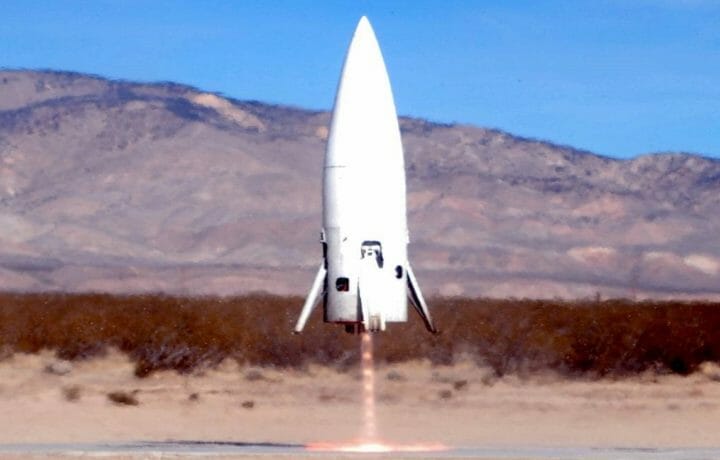The White House’s proposal for a new Space Force is still under debate in Congress, but that’s not slowing the U.S. military’s forward march into space. The Pentagon is directing billions of dollars through its innovative research-and-development arm, the Defense Advanced Research Projects Agency (DARPA), to design new means of launching and maintaining fleets of space satellites for national-defense purposes.
Robotic Repair Crews
One new DARPA program, Robotic Servicing of Geosynchronous Satellites, seeks to build robots that can repair satellites in orbit. DARPA and project partners will build spacecraft capable of traversing the approximately 400 military, government, and commercial satellites that the United States has currently in operation above Earth. Robots will deploy from these spacecraft, dock with satellites, and make any needed repairs or upgrades to their components and software.
DARPA will host a “proposers day” May 22 for the project. The agency’s proposal pitches the initiative as action “toward a transformed space architecture with revolutionary capabilities.”
By this, it doesn’t just mean that there will be fewer satellites suffering operational glitches: It means that the United States will be able to deploy a much larger number of satellites, and at much lower costs, than is possible today.
Present-day satellites are outfitted with numerous backup systems that take over if the main systems malfunction. These backups are necessary, because it is too difficult and dangerous for human astronauts to dock with a malfunctioning satellite and get its failing system running again. However, they add a lot of extra bulk and weight to satellites, which makes satellite construction and launches all the more expensive.
But if spacefaring robot repair crews are in orbit to make satellite fixes more safely and easily, satellites could do without that added backup heft. More compact, lower-weight satellites could roll out of production lines more cheaply and in much less time, and lift through the stratosphere with much less rocket propulsion. All of which would make it possible to deploy and run much larger fleets of satellites.
DARPA Launch Challenge
A second DARPA project ties in with satellite liftoff. It’s the DARPA Launch Challenge, and it invites engineering teams to design and build space-launch systems that can rocket payloads into orbit with minimal notice or planning time. Each participating team will need to achieve two launches within several weeks of each other and from two different locations. The competition’s organizers will decide each launch location and won’t tell it to the team until shortly before launch day.
Space launches today usually involve months of planning. Several months is an eternity in battlefield planning. The defense leaders organizing this DARPA challenge want to make tactical use of space-based systems, and they want those systems to be able to spring into action rapidly, change their flight paths at short notice, and in general adapt quickly as conditions change. Changing conditions are, after all, a feature of wartime environments everywhere.
“We want to see a shift to much more tactical use of space capabilities. And really what that does is transform the way that we use space in the same way we use other capabilities like air,” said DARPA Launch Challenge Program Manager Todd Master in a DARPAtv interview.
These new DARPA initiatives coincide with ongoing Congressional hearings over the White House’s proposed Space Force. Defense leaders are still working out specific details regarding this new space-based defense branch, and congressional lawmakers are still deciding whether to fund it at all. But it’s a safe bet that if Space Force comes into being soon, then a push to lift more U.S. defense systems into space will follow. In which case, these new DARPA initiatives could be of great help.
In fact, they will be helpful even if there is no Space Force. That’s because the U.S. military’s presence in space is growing already. The Air Force, Navy, Coast Guard, and Army all have their own branch space commands. Each branch deploys and interfaces with a network of space satellites that it uses for GPS navigation, communication, and intelligence-gathering. The Army or Air Force will use satellites to keep an eye out for enemy ballistic missile attacks, for example, while Coast Guard units can search a coastline for a stranded ship or an illegal drug-smuggling operation while guided by satellite-enabled tracking and mapping tools. And Air and naval units working together may rely on satellites to coordinate a strike on an enemy squadron or fleet.
All of these operations require relays of streams of immense amounts of data. And it’s satellites that do the relaying. That DARPA is funding space-satellite-related innovations now should thus be no surprise: Space-based capabilities are enormously important to U.S. forces in every domain down on Earth.
“You can sometimes tell what the military is thinking, at least unofficially, by checking out what its most public-facing research arm, the Defense Advanced Research Projects Agency (DARPA), is working on,” wrote John Breeden II, CEO of the Tech Writers Bureau, in a recent column for NextGov. “Today, it seems like DARPA’s eyes are looking upward, all the way into space.”
Space satellites—and the data passing through their sensors—are a key asset to today’s military. And while there is no telling precisely how national U.S. defense strategy will evolve in future years, these DARPA initiatives gives us every reason to think that satellites will play a pivotal role within it.

